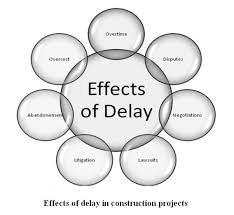 I often assist contractors with their schedule development and updates. This also includes preparing the “fragnets” for Time Impact Analysis, (TIA) or change orders. I find that many smaller contractors are not used to following a procedure for managing their schedules. This makes it nearly impossible to manage their change order time impact.
I often assist contractors with their schedule development and updates. This also includes preparing the “fragnets” for Time Impact Analysis, (TIA) or change orders. I find that many smaller contractors are not used to following a procedure for managing their schedules. This makes it nearly impossible to manage their change order time impact.
What I find, more often than not, is a schedule, (not the latest update, if there is one) that someone has increased the duration for a piece of work that is “impacted” by the change order or delay.
This may seem intuitive to the project manager or superintendent. It may actually work somewhat to model the impact of the change order or delay impact.
But, does it model the actual change or delay? Is it applied to the most recent accepted update or revision? Can it be used as a tool to visually explain the sequence of events associated with the change or delay to arrive at an understanding and agreement of the change package, associated relationships to existing work, and impact to the scheduled completion date?
There are best practices and white papers devoted to the development of “fragnets”. As professional planning and schedule consultants, we should follow these best practices. But, we still need the involvement and direction only the contractor can provide.
The contractor needs to explain the series of events driving the impact and be prepared to provide dates and references to RFI’s, field directions, RFP’s, meeting minutes, or other records which will support the request. We can then build the model of the impact events accurately. Then the contractor needs to tell us specifically which activities this impact actually drives so we can apply the correct logic. We also need to know what work was starting or underway when the issue presented so we know how to apply that logic as well.
It is much more complicated than simply increasing the duration of the activity impacted. The goal of the professional planning and schedule consultant is to model the impact package so it can be presented to the owner as an easily understood representation of the group of events laid out in a timeline fashion with durations and logic the owner can agree to or discuss further. Once this is accomplished, there isn’t much more to argue about. The impact model or fragnet stands on its own and the subjectivity is all but removed from the issue.
But this all depends on the willingness and ability of the contractor to provide the information and direction to support the development of the fragnet.
What other methods have you found to help with this issue?
I’d love to hear what you think!
Please visit https://conschmanservices.com to learn more about Construction and Schedule Management Services, LLC
Please visit my LinkedIn account to learn more about me.
Please visit my “The Blue Book” ProView.
Paul Epperson CCM, PMP, PSP, PMI-SP
 I often assist contractors with their
I often assist contractors with their  As construction scheduling professionals, we’ve all worked on projects which have been impacted by an owner delay which was not recognized as valid by the owner.
As construction scheduling professionals, we’ve all worked on projects which have been impacted by an owner delay which was not recognized as valid by the owner.